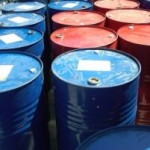WTI and Brent futures rallied during midday trade in Europe today, after numerous sources spoke of a Russian invasion, bumping the risk premium up. Meanwhile, natural gas futures were also higher as investors eye the upcoming US inventories report.
West Texas Intermediate futures for delivery in October traded at $94.04 per barrel, up 0.17%, at 12:38 GMT on the NYMEX. Prices ranged from $93.45 to $94.14 per barrel.
Meanwhile, October Brent on the ICE in London, stood for a 0.41% increase at $103.14 per barrel. Daily low and high were $102.43 and $103.20 per barrel, respectively. The contract’s premium to its US counterpart widened to $9.10. The European brand added 0.2% on Wednesday.
“Geopolitical tensions are having an impact,” Hans van Cleef, energy economist at ABN Amro Bank NV in Amsterdam, said in a report. “Prices may not be increasing, but nor are they declining.”
Ukraine
German Chancellor Angela Merkel has demanded an explanation by Russian President Vladimir Putin of numerous reports of Russian troops fighting in Ukraine, while the US said a Russian-directed counter-offensive in the region was taking place. Ukrainian President Petro Poroshenko canceled a visit to Turkey, saying his place is in Kiev after Russia has “deployed troops” in Ukraine.
Reports of dozens of Russian armored vehicles entering Ukraine yesterday added to pressure on Russia, after several other such cases recently and the capture of 10 Russian paratroopers by Ukrainian military inside Ukraine.
For the first time in quite a while, Russian media have questioned the actions of the Kremlin and scrutinized its ambiguous and shady stance on the reports, reminding of the similar circumstances amid which Chechnya and Afghanistan have been invaded in the past.
Russia has repeatedly denied accusations that it supports the rebels in any way. A growing number of Russian heavy weaponry, including the system used to bring down the civilian airliner in June, and so-called “volunteers”, in addition to Russian troops reported on numerous occasions as fighting alongside the rebels and mysterious burials of Russian soldiers, who officially died on “military exercises”, raise serious questions.
Investors, however, seem to disregard the quite real possibility of a direct military confrontation between Russia and Ukraine, and all the geopolitical and economical risks that it brings, focusing instead on supply and demand figures.
US oil inventories
The US Energy Information Administration (EIA) posted its weekly report on oil stocks yesterday. Commercial crude supplies were shown to have dropped 2.1 million barrels in the week through August 22, beating estimates of a draw of 0.9m-1.9m barrels.
Supplies of crude at Cushing, Oklahoma, the biggest US storage hub and delivery point for NYMEX-traded contracts, rose to 20.7 million barrels from 20.2m a week earlier, after reaching half of year-ago levels two weeks ago.
Gasoline stocks dropped 1 million barrels , while distillates, a category which includes diesel and heating oil, were up 1.3m.
Refineries operated at 93.5% of their operable capacity, with gasoline production gaining to close on 10m barrels per day, while distillate fuel output was little changed at ~5m barrels daily.
Domestic crude production was little changed at 8.6 million barrels per day, more than 1 million above year-ago levels. Meanwhile, imports of crude stood at 7.6 million bpd, 1 million down from year-ago levels.
Natural gas
Front-month natural gas futures for delivery in October traded at $4.018 per million British thermal units (mBtu), up 0.37%. Prices ranged from $3.991 to $4.028 per mBtu. The contract added 1.37% on Wednesday, reaching a six-week high of $4.032.
“Prices remain tricky short term as they remain range bound with many things to consider, such as a couple lighter builds and more comfortable temperatures,” analysts at NatGasWeather.com said in a note to clients today. “We expect the markets to have limited upside potential as the return of 100+ Bcf builds will be looming.”
Today’s Energy Information Administration (EIA) report, which will cover the week through August 22, is expected to show ~73-78 Billion cubic feet (Bcf) of natural gas were added to US inventories, which would among the smaller builds this summer, though still quite bigger than average. Next week’s build is also expected to be leaner, as several days of warm temps over the northern US drive fairly strong cooling demand.
NatGasWeather.com projected easing temps over the southern and central US in the coming days, as the cool Canadian system that tracks through the Midwest and Northeast. The system will be off the mainland by next week, allowing for high pressure to again build up and bump readings up a notch. Overall cooling demand over the next seven days will be moderate.
“Cooler temperatures will sweep through the central US, including the southern Plains and northern Texas, over the coming days,” the analyst group said. “The northern US will be quite comfortable into the first few days of September.”





